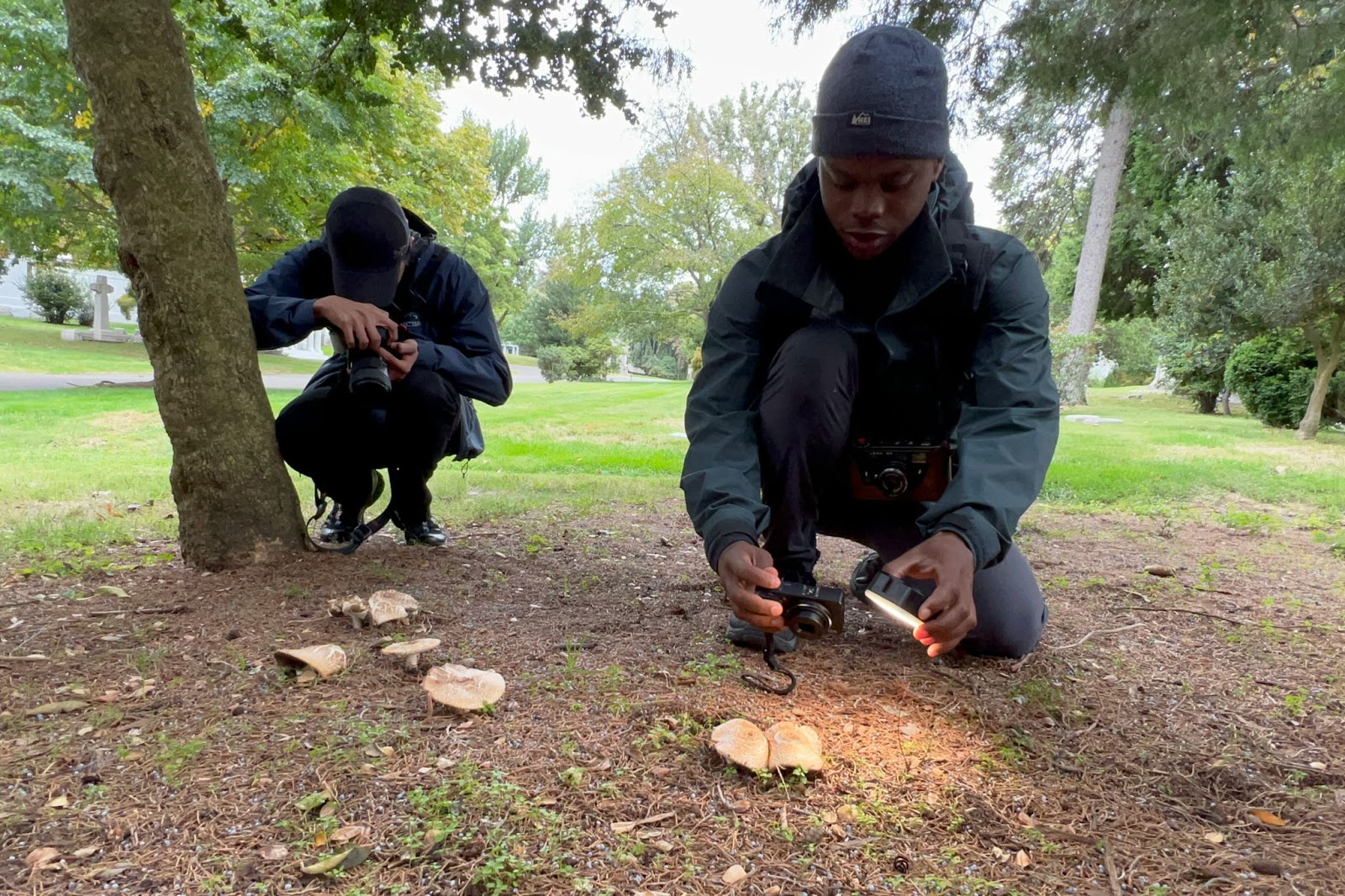On a chilly October morning in Woodlawn Cemetery, Ethan Crenson discovered life on a fallen branch. “These are oyster mushrooms,” he said, pointing to a pair of white lips on the decaying wood. “You can eat these, they’re pretty much the same species you find in Whole Foods.”
Crenson is a member of the New York Mycological Society, a citywide club dedicated to mapping the borders of the fungus kingdom within the five boroughs. Every weekend, dozens of members meet in city parks to identify and document local mushrooms, crusts, and molds.
They are organizing their first “Fungus Festival” on Sunday, Oct. 23, on Randall’s Island, just neighboring the South Bronx.
At the festival, the organizers plan to hold guided mushroom walks in English and Spanish, identification lessons, and lectures by expert mycologists. And for those interested in tasting exotic mushrooms, they will teach you how to grow your own.
“The reason people like fungi is because they’re really weird,” said Sigrid Jakob, president of the New York Mycological Society. “Fungi come in strange colors, they have weird forms, they have weird odors.”
Mushrooms have attracted new attention in recent years, thanks to a flush of documentaries and books on their medicinal and psychoactive properties.
“In the club we’ve seen a big bump in membership,” said Crenson, a graphic artist who also manages the society’s newsletter. “It seems like interest has really spiked quite a bit.”
And the fungal diversity of the Bronx is much broader than the shelves of your local grocery store. On the walk through Woodlawn Cemetery, members of the club found dozens of edible puffballs and boletes, as well as toxic amanitas and the appropriately-named stinkhorns.
Wild mushrooms sometimes appear in gourmet restaurants, but the market declined after the pandemic, according to Steve Koster, who sources mushrooms for the produce market E. Armata in Hunt’s Point.
“When Covid hit, a lot of restaurants cut back because there wasn’t the volume to move them out,” Koster said. “They don’t last long.” Depending on the season, he can still source exotics like chanterelles or lion’s mane, although it may take a day or two.
Because identifying mushrooms is so tricky, the society emphasizes learning from an expert. “Don’t use an app, don’t just use a book,” Jakob cautioned. “The only way to tell if a mushroom is poisonous or not is by learning that mushroom, touching it, and somebody explaining that mushroom to you.”
The Mycological Society discourages foraging, which is illegal in NYC parks. However, some members do forage outside the city. In its 60-year history, the club only had one close call, when two members mistook a deadly galerina for a honey mushroom. Both survived.
Some members aren’t bothered by the risks. “There are more toxic plants than toxic mushrooms,” according to Roman Kosoy, a computational immunologist who started collecting mushrooms in Russia when he was around 4 years old.
“Before, people were afraid of them. Now, they are a lot more positive,” Kosoy added, noting the popularity of herbal supplements based on wild mushrooms like Chaga and Lion’s Mane. “I think people are starting to accept that mushrooms are not just delicious, but also good for you.”
The Fungus Festival will be held at Randall’s Island Urban Farm on Sunday, Oct. 23, from 11:00 AM to 3:00 PM. Attendance is free.

